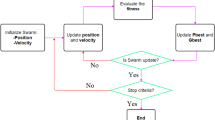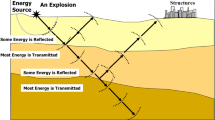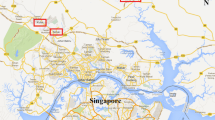Abstract
Air overpressure (AOp) produced by blasting is one of the environmental hazards of mining operations. Accordingly, the accurate prediction of AOp is very important, and this issue requires the application of appropriate prediction models. With this in view, this paper aims to propose a new data-driven model in the prediction of AOp using a hybrid model of fuzzy system (FS) and firefly algorithm (FA). This combination is abbreviated as FS-FA model. The used data-sets in the proposed FS-FA model were arranged in a format of three input parameters. In total, 86 sets of the mentioned parameters were prepared. To avoid over-fitting, the data-sets were divided into two parts of training (80%) and test sets (20%). Three quantitative standard statistical performance evaluation measures, variance account for (VAF), coefficient correlation (R2) and root mean squared error (RMSE), were used to check the accuracy of the FS-FA model. According to the results, the R2 and RMSE values obtained from the proposed FS-FA model were equal to 0.977 and 1.241 (for testing phase), respectively, which clearly demonstrate the merits of the proposed FS-FA model. In other words, the obtained R2 and RMSE show that FS-FA model has high prediction level in the modeling of blast-induced AOp.








Similar content being viewed by others
References
Hasanipanah M, Shirani Faradonbeh R, Bakhshandeh Amnieh H, Jahed Armaghani D, Monjezi M (2017) Forecasting blast induced ground vibration developing a CART model. Eng Comput 33(2):307–316
Taheri K, Hasanipanah M, Bagheri Golzar S, Abd Majid MZ (2017) A hybrid artificial bee colony algorithm-artificial neural network for forecasting the blast-produced ground vibration. Eng Comput 33(3):689–700
Hasanipanah M, Shirani Faradonbeh R, Jahed Armaghani D, Bakhshandeh Amnieh H, Khandelwal M (2017) Development of a precise model for prediction of blast-induced flyrock using regression tree technique. Environ Earth Sci 76(1):27
Jahed Armaghani D, Hasanipanah M, Bakhshandeh Amnieh H, Tonnizam Mohamad E (2016) Feasibility of ICA in approximating ground vibration resulting from mine blasting. Neural Comput Appl. https://doi.org/10.1007/s00521-016-2577-0
Hasanipanah M, Bakhshandeh Amnieh H, Arab H, Zamzam MS (2016) Feasibility of PSO–ANFIS model to estimate rock fragmentation produced by mine blasting. Neural Comput Appl. https://doi.org/10.1007/s00521-016-2746-1
Hasanipanah M et al (2016) Prediction of an environmental issue of mine blasting: an imperialistic competitive algorithm-based fuzzy system. Int J Environ Sci Technol. https://doi.org/10.1007/s13762-017-1395-y
Hasanipanah M, Armaghani DJ, Amnieh HB, Koopialipoor M, Arab H (2018) A risk-based technique to analyze flyrock results through rock engineering system. Geotech Geol Eng 36:2247–2260
Rad HN, Hasanipanah M, Rezaei M, Eghlim AL (2018) Developing a least squares support vector machine for estimating the blast-induced flyrock. Eng Comput 34(4):709–717
Bhandari S (1997) Engineering rock blasting operations. A.A. Balkema, Avereest
Kuzu C, Fisne A, Ercelebi SG (2009) Operational and geological parameters in the assessing blast induced airblast-overpressure in quarries. Appl Acoust 70:404–411
Mohammadhassani M, Nezamabadi-pour H, Shariati M, Suhatril M (2013) Identification of a suitable ANN architecture in predicting strain in tie section of concrete deep beams. Struct Eng Mech 46(6):853–868
Toghroli A, Mohammadhassani M, Shariati M, Suhatril M, Ibrahim Z, Ramli Sulong NH (2014) Prediction of shear capacity of channel shear connectors using the ANFIS model. Steel Compos Struct J 17(5):623–639
Mohammadhassani M, Nezamabadi-Pour H, Suhatril M, Shariati M (2014) An evolutionary fuzzy modelling approach and comparison of different methods for shear strength prediction of high-strength concrete beams without stirrups. Smart Struct Syst Int J 14(5):785–809
Hasanipanah M, Noorian-Bidgoli M, Armaghani DJ, Khamesi H (2016) Feasibility of PSO-ANN model for predicting surface settlement caused by tunneling. Eng Comput 32(4):705–715
Mansouri I, Shariati M, Safa M, Ibrahim Z, Tahir MM, Petković D (2017) Analysis of influential factors for predicting the shear strength of a V-shaped angle shear connector in composite beams using an adaptive neuro-fuzzy technique. J Intell Manuf. https://doi.org/10.1007/s10845-017-1306-6
Safa M et al (2016) Potential of adaptive neuro fuzzy inference system for evaluating the factors affecting steel-concrete composite beam’s shear strength. Steel Compos Struct 21(3):679–688
Mansouri I et al (2016) Strength prediction of rotary brace damper using MLR and MARS. Struct Eng Mech 60(3):471–488
Toghroli A et al (2016) Potential of soft computing approach for evaluating the factors affecting the capacity of steel–concrete composite beam. J Intell Manuf. https://doi.org/10.1007/s10845-016-1217-y
Hasanipanah M, Jahed Armaghani D, Bakhshandeh Amnieh H et al (2016) Application of PSO to develop a powerful equation for prediction of flyrock due to blasting. Neural Comput Appl. https://doi.org/10.1007/s00521-016-2434-1
Hasanipanah M, Shahnazar A, Arab H, Golzar SB, Amiri M (2017) Developing a new hybrid-AI model to predict blast induced backbreak. Eng Comput 33(3):349–359
Azura Sari P et al (2018) An intelligent based-model role to simulate the factor of safe slope by support vector regression. Eng Comput. https://doi.org/10.1007/s00366-018-0677-4
Sedghi Y et al (2018) Application of ANFIS technique on performance of C and L shaped angle shear connectors. Smart Struct Syst 22(3):335–340
Sadeghipour Chahnasir E et al (2018) Application of support vector machine with firefly algorithm for investigation of the factors affecting the shear strength of angle shear connectors. Smart Struct Syst 22(4):413–424
Shi XZ, Zhou J, Wu BB, Huang D, Wei W (2012) Support vector machines approach to mean particle size of rock fragmentation due to bench blasting prediction. Trans Nonferrous Met Soc China 22(2):432–441
Wang M, Shi X, Zhou J (2019) Optimal charge scheme calculation for multiring blasting using modified harries mathematical model. J Perform Constr Facil. https://doi.org/10.1061/(ASCE)CF.1943-5509.0001263
Khandelwal M, Singh TN (2005) Prediction of blast induced air overpressure in opencast mine. Noise Vib Control Worldw 36:7–16
Mohamed MT (2011) Performance of fuzzy logic and artificial neural network in prediction of ground and air vibrations. Int J Rock Mech Min Sci 48:845–851
Khandelwal M, Kankar PK (2011) Prediction of blast-induced air overpressure using support vector machine. Arab J Geosci 4:427–433
Hajihassani M, Jahed Armaghani D, Sohaei H, Mohamad ET, Marto A (2014) Prediction of airblast-overpressure induced by blasting using a hybrid artificial neural network and particle swarm optimization. Appl Acoust 80:57–67
Jahed Armaghani D, Hajihassani M, Monjezi M, Mohamad ET, Marto A, Moghaddam MR (2015) Application of two intelligent systems in predicting environmental impacts of quarry blasting. Arab J Geosci. https://doi.org/10.1007/s12517-015-1908-2
Hasanipanah M, Naderi R, Kashir J, Noorani SA, Qaleh AZA (2017) Prediction of blast-produced ground vibration using particle swarm optimization. Eng Comput 33(2):173–179
Jahed Armaghani D, Hasanipanah M, Mohamad ET (2016) A combination of the ICA-ANN model to predict air-overpressure resulting from blasting. Eng Comput 32(1):155–171
Yang XS (2009) Firefly algorithms for multimodal optimization. International symposium on stochastic algorithms. pp 169–178
Kaur M, Ghosh S (2016) Network reconfiguration of unbalanced distribution networks using fuzzy-firefly algorithm. Appl Soft Comput 49:868–886
Yang XS, Gandomi AH, Talatahari S, Alavi AH (2012) Metaheuristics in water resources, geotechnical and transportation engineering. Elsevier, Waltham, ISBN: 9780123982964
Zhang Y, Wu L (2012) A novel method for rigid image registration based on firefly algorithm. Int J Res Rev Soft Intell Comput 2:141–146
Apostolopoulos T, Vlachos A (2011) Application of the firefly algorithm for solving the economic emissions load dispatch problem. Int J Comb 523806. https://doi.org/10.1155/2011/523806
Blum C, Li X (2008) Swarm intelligence in optimization. Springer, Berlin, pp 43–85
Breza M, McCann JA (2008) Lessons in implementing bio-inspired algorithms on wireless sensor networks. In: NASA/ESA Conference on adaptive hardware and systems. pp 271–276. https://doi.org/10.1109/AHS.2008.72
Basu B, Mahanti GK (2011) Firefly and artificial bees colony algorithm for synthesis of scanned and broadside linear array antenna. Prog Electromagn Res 32:169–190
Jakimovski B, Meyer B, Maehle E (2010) Firefly flashing synchronization as inspiration for self-synchronization of walking robot gait patterns using a decentralized robot control architecture. In: International conference on architecture of computing systems, pp. 61–72
Gholizadeh S, Barati H (2012) a comparative study of three metaheuristics for optimum design of trusses. Int J Optim Civil Eng 3:423–441
Yang XS (2010) Engineering optimization: an introduction with metaheuristic applications. Wiley, Hoboken. ISBN: 9780470582466
Zadeh LA (1976) A fuzzy-algorithmic approach to the definition of complex or imprecise concepts. In: Systems theory in the social sciences. Birkhäuser, Basel, pp 202–282
Wang LX (1999) A course in fuzzy systems. Prentice-Hall press, Prentice, pp 258–265
Ali MM, Khompatraporn C, Zabinsky ZB (2005) A numerical evaluation of several stochastic algorithms on selected continuous global optimization test problems. J Glob Optim 31(4):635–672
Bidar M, Sadaoui S, Mouhoub M, Bidar M (2018) Enhanced firefly algorithm using fuzzy parameter tuner. Comput Inform Sci 11 (1). https://doi.org/10.5539/cis.v11n1p26
Monjezi M, Hasanipanah M, Khandelwal M (2013) Evaluation and prediction of blast-induced ground vibration at Shur River Dam, Iran, by artificial neural network. Neural Comput Appl 22(7–8):1637–1643
Hasanipanah M, Armaghani DJ, Monjezi M, Shams S (2016) Risk assessment and prediction of rock fragmentation produced by blasting operation: a rock engineering system. Environ Earth Sci 75(9):808
Hasanipanah M, Golzar SB, Larki IA, Maryaki MY, Ghahremanians T (2017) Estimation of blast-induced ground vibration through a soft computing framework. Eng Comput 33(4):951–959
Shahnazar A, Nikafshan Rad H, Hasanipanah M, Tahir MM, Jahed Armaghani D, Ghoroqi M (2017) A new developed approach for the prediction of ground vibration using a hybrid PSO-optimized ANFIS-based model. Environ Earth Sci 76(15):527
Gao W, Alqahtani AS, Mubarakali A, Mavaluru D, Khalai S (2019) Developing an innovative soft computing scheme for prediction of air overpressure resulting from mine blasting using GMDH optimized by GA. Eng Comput. https://doi.org/10.1007/s00366-019-00720-5
Keshtegar B, Hasanipanah M, Bakhshayeshi I, Sarafraz ME (2019) A novel nonlinear modeling for the prediction of blast induced airblast using a modified conjugate FR method. Measurement 131:35–41
Zhou J, Li X, Mitri HS (2016) Classification of rockburst in underground projects: comparison of ten supervised learning methods. J Comput Civil Eng 30(5):04016003
Zhou J, Li XB, Shi XZ (2012) Long-term prediction model of rockburst in underground openings using heuristic algorithms and support vector machines. Saf Sci 50(4):629–644
Zhou J, Shi XZ, Li XB (2016) Utilizing gradient boosted machine for the prediction of damage to residential structures owing to blasting vibrations of open pit mining. J Vib Control 22(19):3986–3997
Wang MZ, Shi XZ, Zhou J, Qiu XY (2018) Multiplanar detection optimization algorithm for the interval charging structure of large-diameter longhole blasting design based on rock fragmentation aspects. Eng Optim 50(12):2177–2191
Behzadafshar K, Sarafraz ME, Hasanipanah M, Mojtahedi SFF, Tahir MM (2017) Proposing a new model to approximate the elasticity modulus of granite rock samples based on laboratory tests results. Bull Eng Geol Environ. https://doi.org/10.1007/s10064-017-1210-5
Jiang W, Chelang AA, Soltani Tehrani M, Khorami M, Hasanipanah M (2018) Simulating the peak particle velocity in rock blasting projects using a neuro-fuzzy inference system. Eng Comput https://doi.org/10.1007/s00366-018-0659-6
Eskandar H, Heydari E, Hasanipanah M, Jalil Masir M, Mahmodi Derakhsh A (2018) Feasibility of particle swarm optimization and multiple regression for the prediction of an environmental issue of mine blasting. Eng Comput 35(1):363–376
Behzadafshar K, Mohebbi F, Soltani Tehrani M, Hasanipanah M, Tabrizi O (2018) Predicting the ground vibration induced by mine blasting using imperialist competitive algorithm. Eng Comput 35(4):1774–1787
Mojtahedi SFF, Ebtehaj I, Hasanipanah M, Bonakdari H, Amnieh HB (2019) Proposing a novel hybrid intelligent model for the simulation of particle size distribution resulting from blasting. Eng Comput 35(1):47–56
Tonnizam Mohamad E, Hajihassani M, Jahed Armaghani D, Marto A (2012) Simulation of blasting-induced air overpressure by means of artificial neural networks. Int Rev Modell Simul 5:2501–2506
Faradonbeh RS, Hasanipanah M, Amnieh HB, Jahed Armaghani D, Monjezi M (2018) Development of GP and GEP models to estimate an environmental issue induced by blasting operation. Environ Monit Assess 190(6):351
Jahed Armaghani D, Hajihassani M, Sohaei H, Mohamad ET, Marto A, Motaghedi H, Moghaddam MR (2015) Neuro-fuzzy technique to predict air-overpressure induced by blasting. Arab J Geosci. https://doi.org/10.1007/s12517-015-1984-3
Hajihassani M, Jahed Armaghani D, Monjezi M, Tonnizam Mohamad E, Marto A (2015) Blast-induced air and ground vibration prediction: a particle swarm optimization-based artificial neural network approach. Environ Earth Sci 74:2799–2817
Tonnizam Mohamad E et al (2016) Estimation of air-overpressure produced by blasting operation through a neuro-genetic technique. Environ Earth Sci 75:174
Hasanipanah M, Jahed Armaghani D, Khamesi H, Amnieh HB, Ghoraba S (2016) Several non-linear models in estimating air-overpressure resulting from mine blasting. Eng Comput 32(3):441–455
Acknowledgements
This research is partially supported by the National Natural Science Foundation Project of China (Grant No. 41807259), the State Key Laboratory of Safety and Health for Metal Mines (Grant No. 2017-JSKSSYS-04), the Shenghua Lieying Program of Central South University (Principle Investigator: Dr. Jian Zhou).
Author information
Authors and Affiliations
Corresponding authors
Additional information
Publisher’s Note
Springer Nature remains neutral with regard to jurisdictional claims in published maps and institutional affiliations.
Rights and permissions
About this article
Cite this article
Zhou, J., Nekouie, A., Arslan, C.A. et al. Novel approach for forecasting the blast-induced AOp using a hybrid fuzzy system and firefly algorithm. Engineering with Computers 36, 703–712 (2020). https://doi.org/10.1007/s00366-019-00725-0
Received:
Accepted:
Published:
Issue Date:
DOI: https://doi.org/10.1007/s00366-019-00725-0




